Lenovo Yoga 3 Pro Review: Refreshed With Faster Core M
by Brett Howse on March 13, 2015 8:00 AM ESTDisplay
The Yoga 3 Pro keeps the same display resolution as the Yoga 2 Pro, but the model number has been bumped from the SDC424A to SDC434A. The good is that this is already a high resolution display, with 3200x1800 pixels. The bad is that the Samsung made display is a Red Green Blue White (RGBW) subpixel arrangement, which can cause issues with color reproduction and contrast. Luckily Lenovo has sorted out the color reproduction for the Yoga 3 Pro, just like they did with the Yoga 2 Pro a few months into its life.
The higher display density can cause issues with some Windows apps, but overall it is less of a problem now. Hopefully Windows 10 will fix the last remaining issues with high DPI displays.
The Samsung display now has some competition as well. As we have recently seen, Dell launched the new XPS 13 with a Sharp IGZO 3200x1800 display. The Lenovo does come in a bit less expensive, but the Sharp displays have proven to be very good for brightness, black levels, contrast, and color reproduction.
To test our displays, we use SpectralCal’s CalMAN 5 software suite, with an X-Rite i1Display Pro colorimeter for brightness and contrast testing, and the X-Rite i1Pro spectrophotometer for color accuracy.
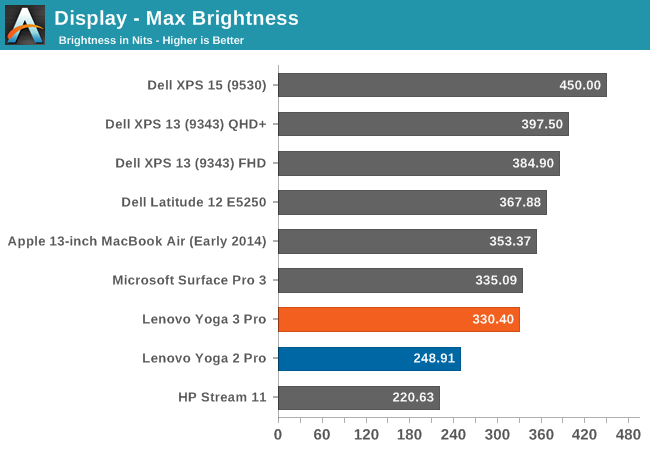

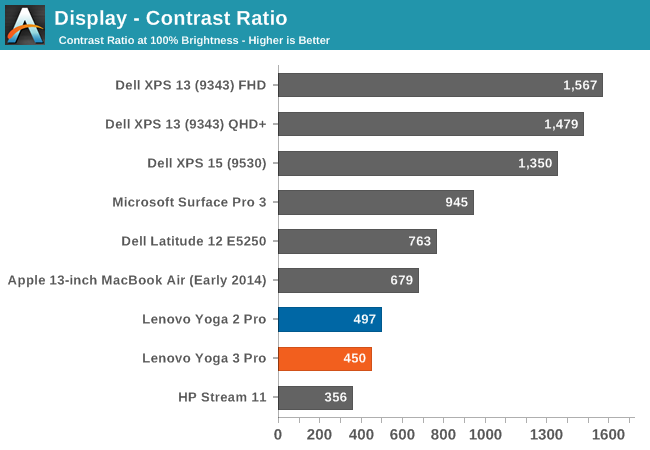
The Yoga 2 Pro was only able to hit 248 nits, and the Yoga 3 Pro can achieve 330 nits, which is a good improvement. However the black levels are very high, with 0.73 nits at maximum brightness, which leads to a mediocre 450:1 contrast ratio. The Dell XPS 13 was able to get over 1500:1, with a higher brightness as well. Lenovo needs to move away from the Samsung display if they can.
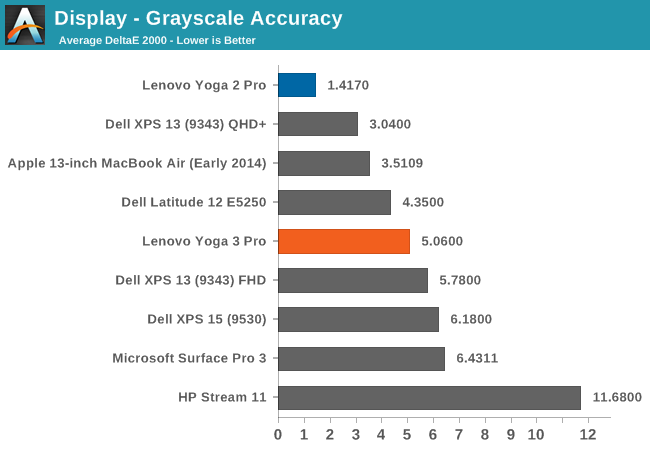
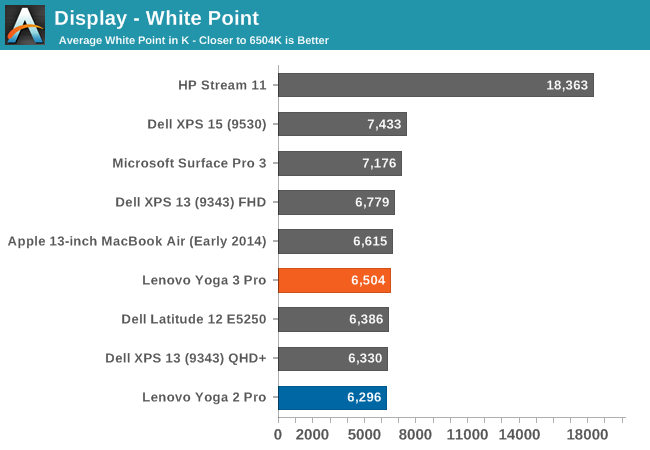
In the Grayscale sweep, you can see that the blue colors drop off quite substantially in the upper levels. This gives us an average dE of just over 5. It is not horrible, but not as good as we have seen from competing devices lately. Luckily this can be corrected through calibration. The White Point is ideal though, and the default gamma comes in close to the 2.2 that we are looking for.
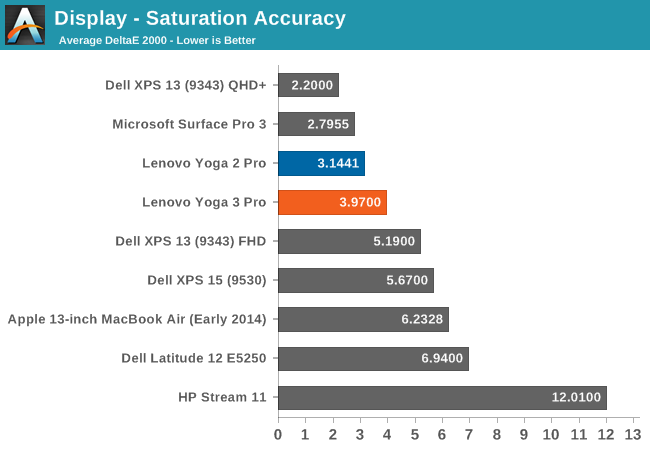
The saturations on the Yoga 3 Pro are pretty good, with the display able to cover the sRGB gamut with the exception of the Blue range which cannot quite hit the 100% level. Still, it is a reasonable showing.
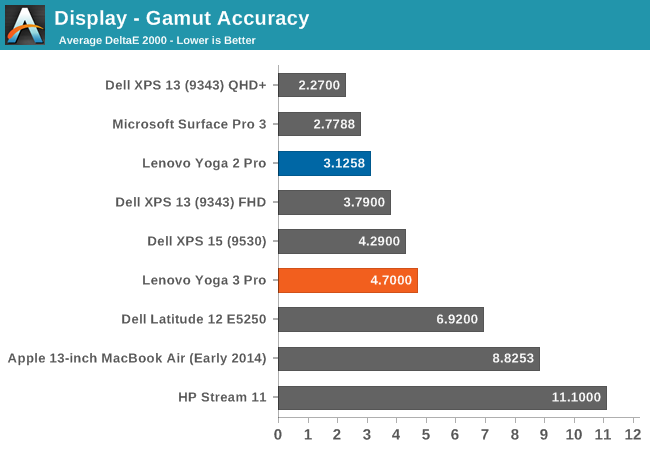

The GMB score is also reasonable, with the Yoga 3 Pro coming in just under 4. It is not the best nor worst display we have seen, but the bar has been raised and it would be good to see more devices having better quality displays. It seems like a broken record, since we have now pretty much moved away from TN panels on all premium devices, but we still have a ways to go.
The Yoga 3 Pro had no issues being calibrated, and we were able to run through our tests and clean up the scores a bit. Calibration on a device like this mostly just fixes the grayscale, but it can be a big improvement.
The grayscale result is much better once calibrated, coming in at just 1.34. All of the other scores have improved as well, with saturation now 2.337, GMB at 2.5013, and gamut at 3.6681. Once calibrated, the display behaves very well, although the contrast ratio cannot be corrected through calibration. That is really the one detriment to this display. The RGBW layout is not ideal and hopefully Lenovo will move to a different display for future models. The Samsung display just has very poor blacks, and it can be distracting when using the device for watching dark movies. Still, it would be a nice benefit if Lenovo would include an ICC profile for the display to correct what can be corrected.



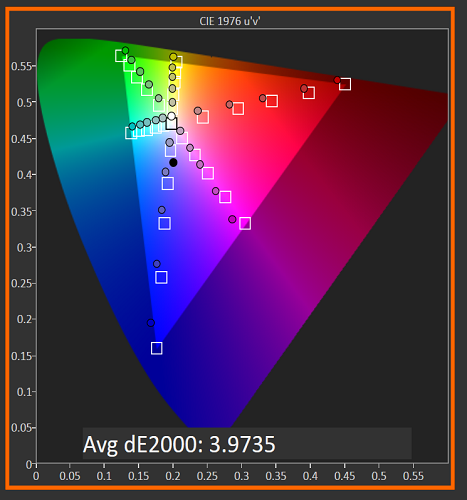

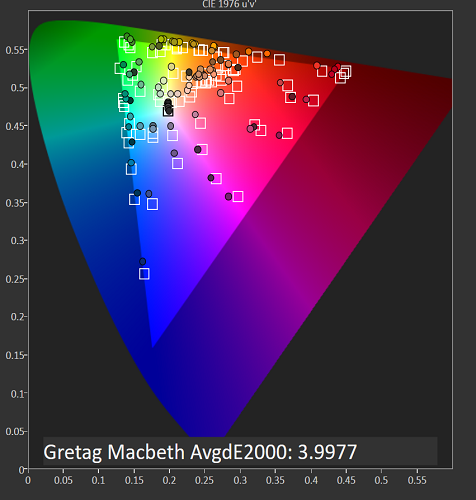












113 Comments
View All Comments
kyuu - Saturday, March 14, 2015 - link
I will say this for Lenovo though: I much prefer soft-touch materials and colors like they have on the Yoga 3 Pro to cold, slick, plain-silver aluminum.Antronman - Saturday, March 14, 2015 - link
Considering that your average HP has a life expectancy about the same as your warranty, I wouldn't be buying one.But yes, the XPS 13 is the machine to buy right now.
Sushisamurai - Sunday, March 15, 2015 - link
Agreed, that was a good additionnonoverclock - Saturday, March 14, 2015 - link
I like the inclusion of "Brett's Core i7-860" results. It helps those of us with older systems compare with what we've actually got. Would like to see more of this.gamoniac - Saturday, March 14, 2015 - link
The yoga 2 pro in the link seems to be a refurbished item. Brand new one is around $1040, it seems.SanX - Sunday, March 15, 2015 - link
I decided to keep Yoga 3 Pro with its 5Y70 processor after this test which compares linear algebra matrix equations Y = AX performance. Here what Yoga shows compared to my overclocked to 4.5GHz 4770k:matrix size --> 1000 2000 3000 4000
----------------------------------------------
5Y70 2.6 GHz 0.27 2.90 8.80 20.7
4770k 4.5 GHz 0.12 1.81 6.70 16.2
(time in seconds, lower is better, dense matrix). Almost the same performance despite of thermal throttling. Wow!
Mumrik - Sunday, March 15, 2015 - link
Did they announce any exciting new spy- or adware for this refresh?Shadowmaster625 - Monday, March 16, 2015 - link
It is deplorable that they are charging $200 more for less performance when the only thing you're really getting is a skimpier battery. The thing should cost less, not more. DOTA 2 isnt even playable on a $1200 machine? That is unbelievable.sre123 - Tuesday, August 30, 2016 - link
can lenovo yoga 3 pro's prosessor intel core m be replaced by intel i5 or i7....